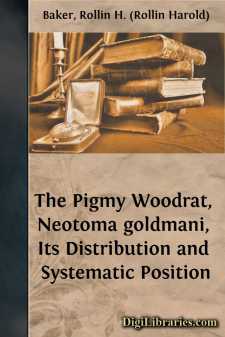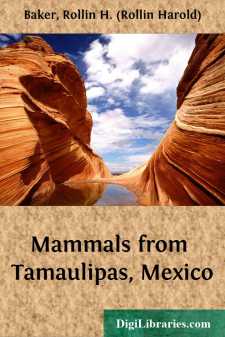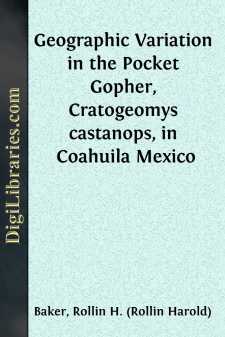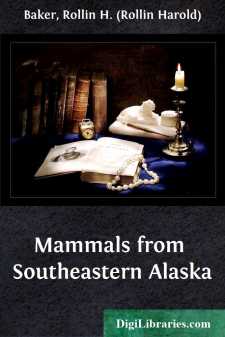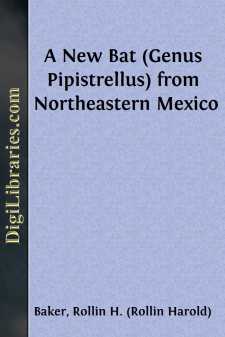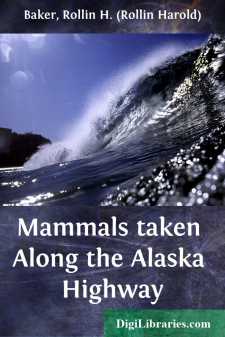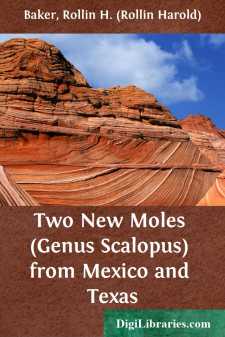Categories
- Antiques & Collectibles 13
- Architecture 36
- Art 48
- Bibles 22
- Biography & Autobiography 813
- Body, Mind & Spirit 142
- Business & Economics 28
- Children's Books 15
- Children's Fiction 12
- Computers 4
- Cooking 94
- Crafts & Hobbies 4
- Drama 346
- Education 46
- Family & Relationships 57
- Fiction 11828
- Games 19
- Gardening 17
- Health & Fitness 34
- History 1377
- House & Home 1
- Humor 147
- Juvenile Fiction 1873
- Juvenile Nonfiction 202
- Language Arts & Disciplines 88
- Law 16
- Literary Collections 686
- Literary Criticism 179
- Mathematics 13
- Medical 41
- Music 40
- Nature 179
- Non-Classifiable 1768
- Performing Arts 7
- Periodicals 1453
- Philosophy 64
- Photography 2
- Poetry 896
- Political Science 203
- Psychology 42
- Reference 154
- Religion 513
- Science 126
- Self-Help 84
- Social Science 81
- Sports & Recreation 34
- Study Aids 3
- Technology & Engineering 59
- Transportation 23
- Travel 463
- True Crime 29
The Pigmy Woodrat, Neotoma goldmani, Its Distribution and Systematic Position
Description:
Excerpt
Neotoma goldmani Merriam, the smallest known member of the genus, inhabits rocky areas in the elevated desert regions of the northern part of the Mexican Plateau (Mesa del Norte). Goldman (N. Amer. Fauna, 31:82, October 10, 1910) had for study ten specimens from two localities in Coahuila. Since his report, Dalquest (Louisiana State Univ. Studies, Biol. Sci. Ser. No. 1:162, December 28, 1953) extended the known distribution of this species approximately 225 miles southward into San Luis PotosÃ, where he reported animals from five localities. Field workers from the Museum of Natural History at the University of Kansas recently have taken goldmani in the Mexican states of Chihuahua, Coahuila, Durango, Zacatecas and San Luis PotosÃ, and now we can define, with greater accuracy, the geographic range of this species (see fig. 1 and list of specimens examined).
Goldman (loc. cit.), relying chiefly on external appearance, placed goldmani in the desertorum group, now known as the lepida group (Goldman, Jour. Mamm., 13:67, February 9, 1932). Blossom (Occ. Papers Mus. Zool., Univ. Michigan, 315:3, May 29, 1935) thought that goldmani might be a subspecies of lepida but that intergradation between the two had not been demonstrated. Our newly acquired material, instead of confirming the opinions of Goldman and Blossom, shows that goldmani is more closely related to Neotoma albigula.
Externally goldmani resembles Neotoma lepida (examples from California, Utah, and Colorado) in having long, silky pelage; ochraceous buffy coloring, especially along sides; and underparts basally plumbeous except for a small throat patch where the hairs are entirely white in some individuals. In albigula this patch of white hairs usually is much larger and more conspicuous. Cranially, instead of resembling the lepida group (including Neotoma stephensi), goldmani looks more nearly like a miniature albigula (specimens of albigula from Coahuila). The auditory bullae, in relation to the length of the skull, are of comparable size in goldmani and albigula whereas those of the lepida group are proportionately much larger. Moreover, the posterior margin of the palatal bridge is concave in goldmani and albigula instead of truncate as in the lepida group. Neotoma goldmani differs from both albigula and lepida in: ascending branches of premaxillaries broader posteriorly; supraorbital ridges less pronounced; rostrum less massive; interparietal broader in relation to width of cranium; interorbital space, relative to length of skull, wider; and upper molar teeth broader in relation to their length.
Figure 1.Distribution of the pigmy woodrat,Neotoma goldmani. Solid circles represent specimens examined; hollow circles represent others reported but not examined.The baculum of goldmani, when compared with bacula and with figures of these bones in Burt and Barkalow (Jour. Mamm., 23:291 and 293, August 13, 1942) of species representing the floridana, lepida, albigula, mexicana, fuscipes, and cinerea groups, was found to resemble most closely the baculum of albigula in general proportions (ratio of length to lateral diameter of base) and in having a distinct knob at the distal end....


